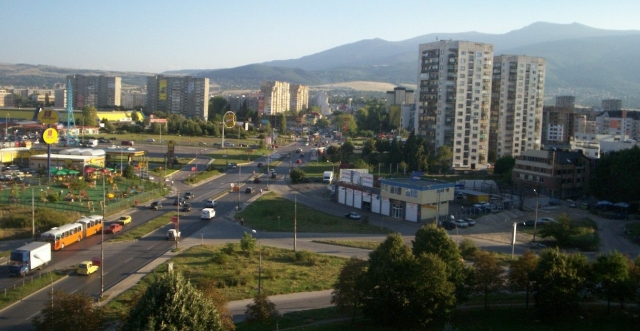Sofia – Bulgaria
- on 02.06.09
- Bulgarian properties articles
- No Comments
Sofia is Bulgaria’s capital city. It is situated in the central-western part of Bulgaria. According to the official data the population of Sofia is about 1.5 million people, but it is estimated that it actually exceeds two million. Sofia is the crossroads of important international routes from western Europe to Istanbul via Belgrade, and from Greece and Macedonia to the Commonwealth of Independent States. There are daily connections to a number of Balkan and European cities.
Sofia has the largest expatriate community in Bulgaria, with foreign compass, diplomatic missions and the headquarters of large Bulgarian companies jostling for space. It is the only region in the country where there has been a large population increase in recent years, as people have migrated from the smaller towns and cities to find work in the capital. Sofia also has the highest Property prices in Bulgaria.

Sofia’s recent history has been influenced by Bulgaria’s close ties with the USSR. This is reflected in the city’s architecture and monuments, many of which include references to the Russian liberation from the Turks in the 1870s and also the liberation from Nazi Germany in 1944. Although the city lacks some of the grandeur of former Eastern Bloc capitals such as Budapest and Prague, the downtown area boasts many noteworthy buildings and atmospheric streets, though it is somewhat spoilt by the city’s ever-increasing traffic. The mayor of Sofia, Boyko Borissov, took the bold step last year of banning private vehicles from the main shopping street, Vitosha Boulevard, which has made the central area significantly more pleasant.
The central mosque and the Orthodox churches give you an exciting feeling that you have moved further east. The crowning glory of Sofia is the majestic presence of Vitosha mountain, which sits astride the central area. There are no other capitals in Europe that provide such a view. One British architect who arrived in Sofia in the late 1990s told me how, having been head-hunted from Hong Kong, he spent a miserable night in a run-down Communist-style hotel in the centre of Sofia. In the morning he opened the curtains to see the majestic snow-covered Vitosha mountain – seemingly at arm’s length from the hotel window-and decided to stay for a bit longer. He is still living in Sofia today!
As the economy improved from the mid-1990s onwards, investment from domestic and foreign investors created a dynamic and booming capital city. Sofia is now moving from being an eastern European capital city to becoming more western European in style. The city has a rich history and tradition – it is packed with beautiful architecture and stunning churches – but at times it seems ultra-modern, with people talking on cellphones everywhere. Then you might turn the corner and see someone going by on a donkey. In the summer visitors and locals enjoy the city’s numerous parks; it is very pleasant to walk Sofia’s leafy streets, or to watch others do so as you sit in a relaxing cafe.
Opinions of Sofia
Mark Thomas, British resident in Sofia since 1995 and director of travel company “Jamadvice”, considers recent changes in Bulgaria’s capital.
‘At what point is a town considered to have “made it”? The answer will depend on one’s personal opinion, and any personal opinion can be looked on with scorn by others – even today. Made it? Perhaps a town has “made it” when it is no longer considered to be the Wild West and is free from food queues. It might also be that point at which traffic lights work even when it rains, or when the weekly groceries are no longer bought from the corner shop but from one of the many supermarket chains that have proliferated in the country. The ultimate acid test of having made it, though, is perhaps that defining moment when a branch of Marks & Spencer opens its doors in your neighbourhood. These changes, perhaps even more than the arrival of Italian designer shops, trendy coffee shops and cars that would not seem out of place in Monte Carlo, are the real benchmark that influence the individual state of mind.
‘From the “dour Sofia” of the early 1990s, when the arrival at the corner shop of deliveries of bread and milk was greeted with queues of people, and where electricity and water supplies were “hit and miss” or “might/might not have”, the capital today has evolved to “dynamic Sofia”. With it has come a work and material culture that is more attuned to the west than the east. Yet this mixes comfortably with Sofia’s almost Mediterranean-like feel. Cafe society rules in spring and summer, when the sun shines, the temperature is high and the tree-lined streets are littered with throngs of people populating score upon score of restaurants, bars and cafes.The supply of people appears endless, and a further sign of Sofia having “made it” is the happy mix of local and international people mingling freely in public places. Sofia is a vibrant city that has come a long way in a very short spaceoftime.Yes.it still has rough edges to it, but it’s also easy to see what makes it so attractive to expats who are seeking an alternative and leisurely lifestyle. Oh,yes, and the prices aren’t bad either.’
Leave a Reply
You must be logged in to post a comment.